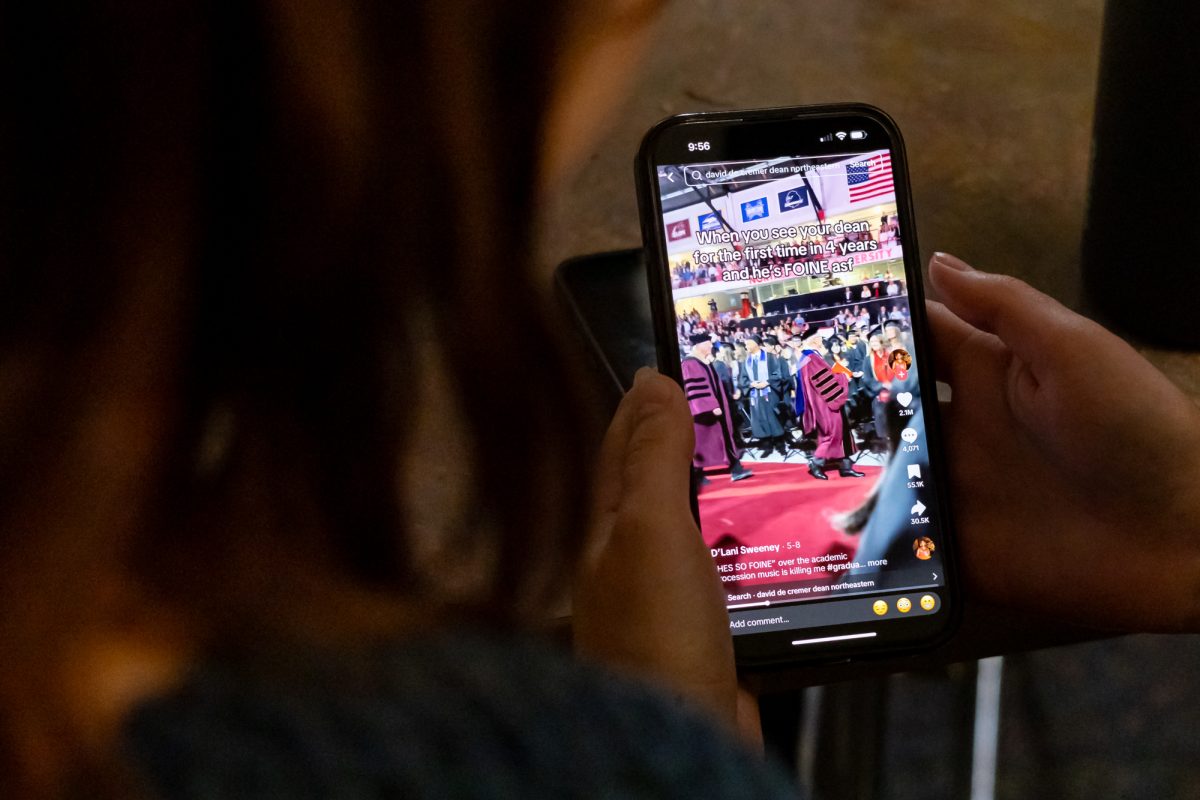By Laura Finaldi, News Correspondent
Tucked away in the rare books room of the Boston Public Library (BPL) is an exhibit entitled “The Public Life of Poetry: Whitman, Dickinson, Longfellow and Their Contemporaries.” The exhibit, which runs through Jan. 30, highlights the works of several famous American poets.
The third floor of the BPL is so hidden that the staircase leading to it cannot be seen from the majestic entryway of the library. Nevertheless, the rare books room is there. It is hidden in the back corner of the third floor behind passageways of walls with nothing on them and an unexpected hallway where there actually are books and desks for librarians. Walk to the end of this passageway and the tiny room is sitting there, as if to say, “Well, what did you expect? I’ve been waiting here all along.”
The lobby of the rare books room lacks the majesty of the library’s lobby and main staircase; however, what it lacks in this department is made up for in character. The room is small, square-shaped and dimly lit, filled with worn hardcover books. The poetry itself is put on display in the form of books, letters and even newspapers, with a small description and historical background for each work.
According to the BPL’s website, the exhibit, which has been on display since Oct. 27, showcases some of America’s best known “professional poets” as well as some of the lesser-known pieces. Just a quick glance around the room and one will see printed, hardcover books in one case and a letter from Emily Dickinson in the next.
Because the works are all in one compact room, it is not quite clear where the exhibit begins or where it ends; that is really up to the visitor. Each glass case is labeled with a general description of what theme or time period the poems were written in so visitors can choose where to begin.
Many of the poems were written around the Civil War, so the writings of slaves, abolitionists and the pro-slavery movement are all on display. One of the books, “Candle Lightin’ Time” by Paul Laurence Dunbar, contains a poem that illustrates the struggle of an African-American woman on the day her beloved significant other “Lias” and other African-American men were allowed to join the Union army. Although she knew it was an honorable cause, she did not want her love to leave.
In contrast, the poet John Greenleaf Whittier was raised in a Quaker household and divided his time between laboring in the fields at home and studying poetry. His love of poetry and the art of the written word was discouraged by his father, so Whittier decided to write for the abolitionist cause. The fact that he decided to write for a purpose, rather than just free verse, made this a more acceptable profession. His poem “Our Countrymen in Chains!” (circa 1835) claimed slavery was a contradiction of the principles on which the nation was founded. The image shown at the exhibit of an African-American man in chains with the slogan “Am I Not a Man and A Brother?” was, according to the exhibit, the central image of the anti-slavery movement.
Walt Whitman also wrote a series of poems about his own experiences in the Civil War era, all recorded in his book “Drum Taps,” which has two versions. The later version includes the famous poem “O Captain! My Captain!” in which the “captain” is Abraham Lincoln himself. The end of the poem paints a portrait of the fallen hero as respected and admired by all those who saw him as their own captain.
On a lighter note, the exhibit also has a copy of “The Orphant Annie Book,” a collection of poems by James Whitcomb Riley published in 1908. The book and its title poem, “Little Orphant Annie,” were the inspiration for the cartoon strip and Broadway musical that carried the same theme of the orphan Annie.
There is also an annotated version of Henry Wadsworth Longfellow’s poem “The Song of Hiawatha” entitled “Longfellow Leaflets: Poems and Prose Passages from the works of Henry Wadsworth Longfellow, for Reading and Recitation.” This version was meant for educational use, so children could develop an interest in and understanding of literature.
This is just a sampling of the many enchanting works of literature put on display in the Rare Books room. Although the exhibit is small, it provides a great illustration of the time period highlighted in many different aspects. These beautiful pieces of poetry are definitely worth a glance at, and certainly worth the $2 T ride to Copley Square.








